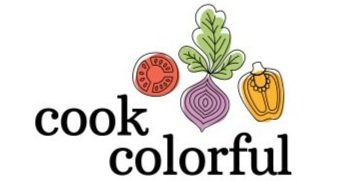What to Feed Our Gut Bugs
Photo by Michael Schiffer on Unsplash
What is living inside our GI system is not a very appetizing conversation. However, it has gotten quite a bit of press lately. According to the Center for Ecogenetics and Environmental Health, “the microbiome is the genetic material of all the microbes - bacteria, fungi, protozoa and viruses - that live on and inside the human body”. Believe it or not, we are actually made up of more microbial cells than human cells. They outnumber our cells 10 to 1. Most of these live in the large intestine of our gut. We have recently learned that our gut bacteria(bugs) regulate many of our bodily functions, from creating vitamins to controlling our immune system, our brain function as well as our metabolism and weight!
Each person has an entirely unique microbiome that was originally determined by their DNA. However, other things can affect your microbiome, including the type of delivery through which you were born, your age, nutrition, physical activity, stress, environmental factors and your history of antibiotic use. Because of these other factors (epigenetics), your microbiome is constantly changing. This means that we can do something to affect it both positively and negatively.
The Standard American Diet (SAD) is comprised largely of processed foods which are high in sugar and starch and notably low in fiber. That, in addition to the overuse of antibiotics as well as other medications that can affect our microbiome, lack of exercise, and the use of chemicals in our everyday products has left our microbiota in trouble.
We can positively influence our microbiome through the food that we eat. By eating foods rich in probiotics and prebiotics, we can feed the healthy bacteria while starving the health-destroying ones. According to Dr. Amy Myers, “Prebiotics are compounds that are fermented by beneficial bacteria in your gut. Probiotics are live microorganisms that keep your gut flora balanced and provide you with health benefits including supporting your immune and digestive systems, and optimal brain function.”
Foods that are rich in probiotics include yogurt, kefir, kombucha, kimchi, tofu, tempeh, naturally fermented soy sauce, tamari, miso and sauerkraut. These foods are already fermented and feed the good bacteria. Foods that are considered prebiotics include high fiber foods such as: dandelion greens, jerusalem artichoke, garlic, onions, asparagus, bananas, oats, apples, flax, resistant starch (resists digestion thereby acting more like a fiber), etc. These foods require the bacteria in your gut to break them down, thereby feeding them and producing essential nutrients for our bodies. The “bad” bacteria largely feed on sugar and starch such as white processed grains (bread, pasta, white rice). By limiting these foods, you can starve the “bad” bacteria while feeding the good.
There is much debate about whether or not we need to supplement our diets with probiotics. You can decide if they make you feel better or not. However, there seems to be no disagreement that a diet rich in high fiber whole foods will provide both the pre and probiotics that our microbiome needs to thrive and create chronic health. According to Dr. Mark Hyman of the Cleveland Clinic, “good bacteria love healthy whole, organic, plant-based foods, ones that are high in fiber and nutrients and contain no artificial ingredients.” You can’t go wrong with that!
Action items for chronically great health:
Limit your processed foods
Limit white processed starches (try quinoa, sweet potato, purple potatoes and black rice)
Avoid artificial ingredients (if you would not cook with it, it shouldn’t be in your store bought food)
Limit sugar and alcohol
By organic produce when possible
Aim to eat a diet of 80% plant based foods
Remember to eat foods that are rich in both pre and probiotics to fuel a healthy microbiome

